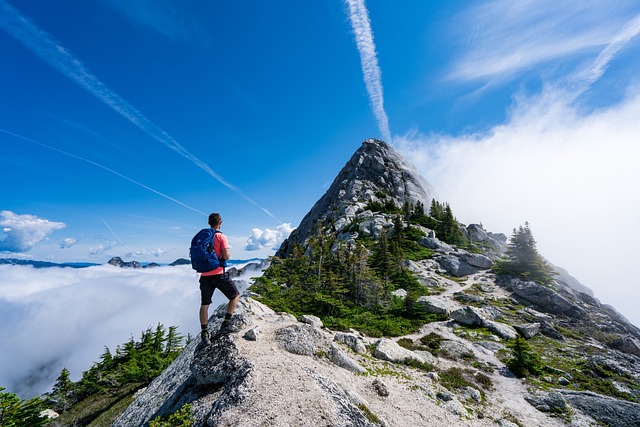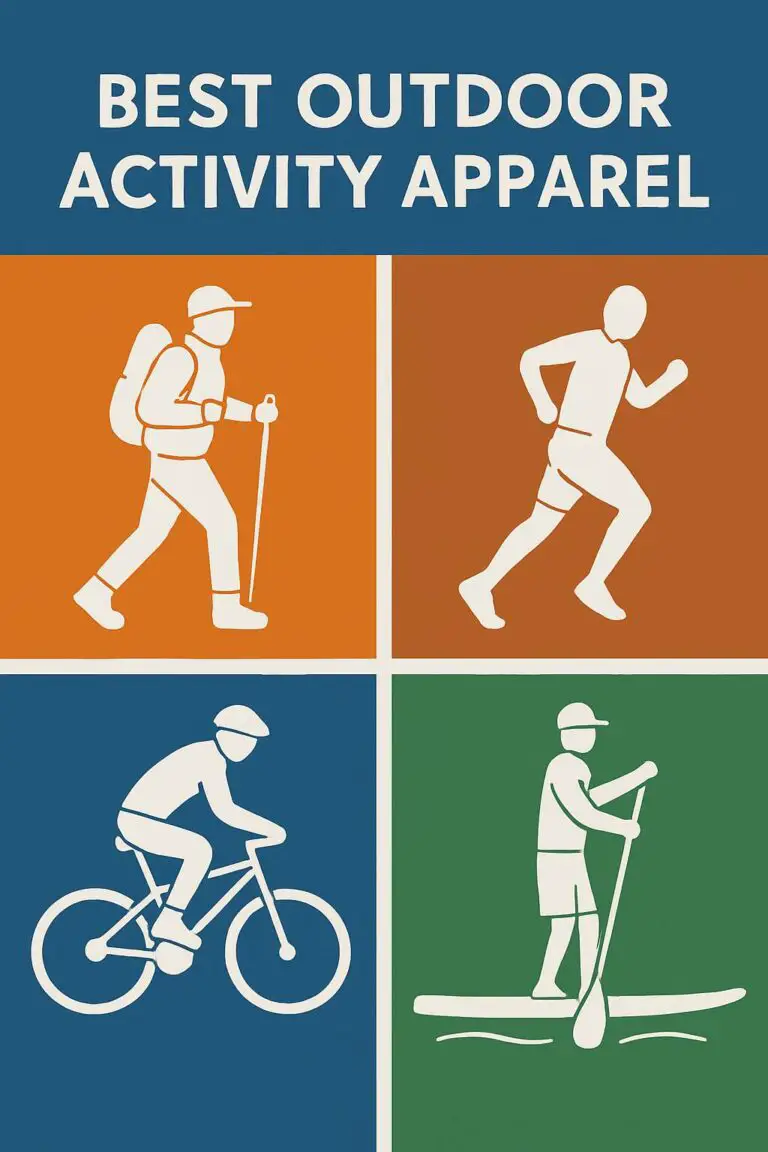Grabbing your backpack and heading out for an adventurous backpacking trip is an exhilarating experience. But have you ever wondered how many dry bags you’ll need to keep your gear safe and dry? In this guide, I’ll walk you through everything you need to know about choosing the right number of dry bags for your backpacking adventures. So, let’s dive in!
Understanding the Importance of Dry Bags
Before I dive into the specifics of how many dry bags you’ll need for backpacking, let’s take a moment to appreciate the importance of these trusty companions. Dry bags are not just an accessory; they’re an essential tool that can make or break your backpacking experience. Here’s why:
- Keeping Your Gear Safe and Dry: The primary purpose of a dry bag is right there in the name: to keep your gear dry. Whether you’re facing torrential downpours, crossing rivers, or accidentally dropping your backpack in a puddle, a reliable dry bag acts as a fortress of protection against water damage. It ensures that your clothing, electronics, sleeping gear, and other essentials remain in pristine condition, allowing you to focus on the adventure at hand without worrying about soggy socks or malfunctioning equipment.
- Preserving the Lifespan of Your Gear: Quality backpacking gear doesn’t come cheap, and taking care of it is essential for its longevity. Water damage can wreak havoc on sensitive electronics, degrade insulation in sleeping bags, and cause mold and mildew growth on clothing and food supplies. By investing in dry bags and using them properly, you’re safeguarding your gear, extending its lifespan, and ultimately saving money in the long run.
- Organizing Your Backpack: Dry bags aren’t just about waterproofing; they also offer a practical solution for organizing your backpack. By categorizing your gear into different dry bags, you can easily locate and access items when you need them, without having to dig through a jumbled mess of gear. It adds a level of convenience and efficiency to your backpacking adventures, ensuring that everything is neatly organized and readily available.
- Emergency Preparedness: Nature has a way of surprising us, and unexpected weather changes or accidents can happen when we least expect them. By having your gear stored in dry bags, you’re better prepared for any unforeseen circumstances. Even if you encounter a sudden rainstorm or accidentally drop your backpack in a river, your dry bags will act as a line of defense, minimizing the potential damage and keeping your essentials safe.
So, now that you understand the importance of dry bags for backpacking, it’s clear that they are more than just fancy sacks. They are your reliable companions, standing between your gear and the elements. With that in mind, let’s move on to assessing your gear and determining how many dry bags you’ll need for your next adventure.
Assessing Your Gear and Needs:
Now that you understand why dry bags are so crucial for backpacking, it’s time to take a closer look at your gear and determine how many dry bags you’ll need for your specific needs. Every backpacker’s gear list is unique, and considering factors such as trip duration, weather conditions, and personal preferences will help you make an informed decision. Here’s a step-by-step process to guide you:
- Take Inventory of Your Gear: Start by making a comprehensive list of all the gear you plan to bring on your backpacking trip. This includes clothing, electronics, sleeping gear, food supplies, and any other essentials specific to your adventure. By having a clear overview of what you’re carrying, you can better evaluate which items require protection from moisture.
- Categorize Your Gear: Divide your gear into categories based on their vulnerability to water damage. For example, electronics like cameras, smartphones, and GPS devices are typically more sensitive and require extra protection. Clothing, sleeping bags, and food supplies may also need waterproofing, albeit to a lesser extent. Categorizing your gear will help you prioritize which items need to be stored in separate dry bags.
- Consider Trip Duration: The length of your backpacking trip plays a significant role in determining the number of dry bags you’ll need. For shorter trips, you may be able to get away with fewer bags, as you won’t require as much clothing or food supplies. However, for longer expeditions, you’ll likely need more storage space to accommodate additional gear and provisions.
- Evaluate Weather Conditions: Think about the typical weather conditions you’ll encounter on your backpacking trip. If you’re heading into a rainy region or during a rainy season, it’s wise to be more cautious and pack additional dry bags. However, if you’re exploring a drier area or during a season with minimal rainfall, you may need fewer dry bags. Assessing the expected weather patterns will give you a better idea of the level of waterproof protection required.
- Personal Preferences and Comfort: Consider your personal preferences and comfort levels. Are you someone who likes to keep your gear meticulously organized and separate? Or are you more comfortable with a minimalist approach, where you combine certain items in one dry bag? Understanding your preferences will help you determine the optimal number of dry bags that strike a balance between organization and simplicity.
In the next section, I’ll delve into estimating the sizes and capacities of dry bags, ensuring that you choose the perfect fit for your gear.
Categorizing and Prioritizing Items:
Now that you have a good understanding of your gear and the factors influencing your dry bag needs, it’s time to delve deeper into categorizing and prioritizing your items. This step will help you determine which gear requires immediate protection and guide you in selecting the appropriate dry bag sizes. Let’s get started:
Divide Your Gear into Categories.
To effectively organize your gear, divide it into logical categories based on its function and vulnerability to water damage. Here are some common categories to consider:
- Electronics: This includes cameras, smartphones, GPS devices, and any other electronic gadgets you plan to bring. These items are typically the most sensitive and require extra protection from moisture.
- Clothing: Consider separating your clothing into different categories like base layers, mid-layers, and outerwear. Keep in mind that wet clothing can quickly lead to discomfort and even hypothermia, so ensuring they are well-protected is crucial.
- Sleeping Gear: Sleeping bags, sleeping pads, and inflatable pillows are essential for a good night’s rest. It’s important to keep them dry to maintain insulation and overall comfort.
- Food Supplies: If you’re carrying perishable food items or items that can be easily damaged by moisture, such as dehydrated meals, make sure to allocate a dry bag for them.
- Miscellaneous Items: This category can include items like toiletries, cookware, repair kits, and any other gear specific to your trip. Assess their vulnerability to water damage and determine if they need separate dry bag protection.
Prioritize Essential Items: Within each category, prioritize the items that are critical for your trip’s success and your personal safety. For example, a functional GPS device or a reliable communication device might take precedence over other non-essential items. By identifying your essential gear, you can ensure that they receive the highest level of waterproof protection.
Determine Dry Bag Sizes: Now that you have your gear categorized and prioritized, it’s time to estimate the sizes of the dry bags you’ll need. Consider the volume and dimensions of each category to determine the appropriate bag size. Remember, it’s better to have slightly larger dry bags to accommodate additional items or unexpected situations.
Keep in mind that some dry bags come in different sizes or have adjustable closures to accommodate varying gear volumes. Opting for a combination of different-sized dry bags can provide flexibility and maximize space utilization within your backpack.
This step sets the foundation for organizing and protecting your gear effectively. In the next section, I’ll discuss how to choose the right material for your dry bags.
Estimating Bag Sizes and Capacities:
Now that you have categorized and prioritized your gear, it’s time to estimate the sizes and capacities of the dry bags you’ll need. Choosing the right sizes ensures that your gear fits comfortably while maintaining effective waterproofing. Here’s how to estimate the appropriate bag sizes and capacities:
- Consider the Volume of Each Category: Start by considering the volume of gear within each category you identified earlier. For example, if you have a clothing category, estimate the total volume of your base layers, mid-layers, and outerwear. Similarly, estimate the volume of your electronics, sleeping gear, and food supplies.
- Determine the Size of Dry Bags: Dry bags typically come in various sizes, ranging from small to extra-large. To estimate the size you’ll need, consider the total volume of each category and select a dry bag size that comfortably accommodates it. It’s better to have slightly larger dry bags than to struggle with tight packing.
- Assess Weight Distribution: In addition to considering volume, it’s important to distribute weight evenly within your backpack. Heavier items should be closer to your back and lighter items towards the top. When estimating bag sizes, keep in mind the weight of your gear and how it will affect the overall balance and comfort of your backpack.
- Consider Multi-purpose Dry Bags: If you’re looking to maximize space and reduce the number of dry bags you carry, consider using multi-purpose dry bags. These versatile bags can be adjusted in size by rolling or folding, allowing you to adapt to different gear volumes. They provide flexibility and can be a practical solution for items that may vary in size or volume throughout your trip.
- Test Packing and Compression: Once you have estimated the sizes of your dry bags, it’s a good idea to do a test pack at home. Place your gear into the respective dry bags and see how they fit together within your backpack. Experiment with compression techniques, such as rolling or using compression straps, to optimize space and ensure a snug fit.
Remember, it’s better to have a few larger dry bags than several small ones, as they can accommodate a range of gear volumes and make packing more efficient. Additionally, consider the weight and distribution of your gear to maintain a comfortable backpacking experience.
Next, I’ll explore different materials used in dry bags, helping you make an informed decision on the right material for your needs.
Choosing the Right Material:
When it comes to dry bags, the material plays a crucial role in their durability, waterproofing capabilities, and overall performance. There are different materials available, each with its own pros and cons. Let’s explore some common options to help you make an informed decision:
- Nylon: Nylon is a popular choice for dry bags due to its excellent combination of durability, weight, and affordability. It is often coated with a waterproof layer, such as polyurethane (PU), to enhance its water resistance. Nylon dry bags are lightweight, resistant to abrasion, and offer good overall performance. They are suitable for most backpacking trips and provide a balance between quality and cost-effectiveness.
- PVC (Polyvinyl Chloride): PVC dry bags are known for their exceptional waterproofing capabilities. They are made from a thick, vinyl-coated fabric that offers excellent protection against water. PVC dry bags are highly durable, resistant to punctures and abrasions, and can withstand rough handling. However, they are usually heavier and bulkier than nylon dry bags, which can impact your overall pack weight and space.
- TPU (Thermoplastic Polyurethane): TPU dry bags are becoming increasingly popular due to their superior durability and flexibility. They are made from a laminated TPU fabric that provides excellent waterproofing and resistance to UV rays. TPU dry bags are lightweight, tear-resistant, and have a more supple feel compared to PVC or nylon. They offer high performance and are ideal for more demanding backpacking adventures.
- Silnylon (Silicone-coated Nylon): Silnylon is a nylon fabric coated with silicone, providing both water resistance and durability. Silnylon dry bags are lightweight, flexible, and packable. They offer good waterproofing capabilities, but they may not be as robust as PVC or TPU dry bags. Silnylon is a suitable choice if you prioritize weight savings and packability without compromising essential water protection.
- Hybrid Materials: Some dry bags feature hybrid materials that combine different fabrics for enhanced performance. For example, a dry bag might have a nylon body for lightweight durability, combined with a PVC or TPU base for added water resistance in high-contact areas. Hybrid dry bags offer the benefits of multiple materials, providing a balance between weight, durability, and waterproofing.
Consider your specific needs, preferences, and budget when choosing the material for your dry bags. Evaluate factors such as weight, durability, waterproofing capabilities, and the nature of your backpacking adventures. Ultimately, selecting a high-quality dry bag made from a suitable material ensures that your gear stays dry and protected throughout your trips.
In the next section, I’ll explore practical packing strategies and techniques to help you make the most of your chosen dry bags. Let’s keep the momentum going!
Packing Strategies and Techniques:
Now that you have your dry bags ready, it’s time to master some practical packing strategies and techniques. By optimizing your packing, you can make the most efficient use of space while ensuring proper waterproofing. Here are 6 tips to help you pack your gear effectively:
- Roll, Don’t Fold: When packing your clothing, sleeping gear, and other soft items, rolling them instead of folding can save space and minimize wrinkles. Start by tightly rolling each item individually and then place them inside the dry bags. Rolling also helps in creating a more compact shape, making it easier to fit everything into your backpack.
- Utilize Compression: Compression sacks or straps can be a valuable addition to your packing arsenal. These tools allow you to compress bulky items like sleeping bags or clothing, reducing their overall volume and maximizing space within your dry bags. Just be careful not to compress items too tightly, as it may compromise the loft or functionality of certain gear.
- Group Similar Items Together: Organize your gear within the dry bags by grouping similar items together. For example, place all your electronics in one dry bag, clothing in another, and sleeping gear in a separate bag. This approach not only helps with easy access but also provides an additional layer of protection by minimizing potential damage caused by items rubbing against each other.
- Utilize Multiple Dry Bags for Added Protection: Consider using multiple dry bags for added protection and organization. For instance, you might use one dry bag exclusively for electronics, ensuring they have an extra layer of waterproofing. Use smaller dry bags or pouches for items like toiletries or first aid kits, which can be easily accessed without rummaging through larger bags.
- Pack Heavier Items Closest to Your Back: When placing your dry bags inside your backpack, make sure to position the heavier items closest to your back. This placement helps maintain a better balance and distribution of weight, resulting in improved stability and comfort during your backpacking adventures.
- Test for Water-Tightness: Before heading out on your trip, it’s a good practice to test the water-tightness of your dry bags. Seal them tightly and submerge them in a basin or bathtub filled with water. Look for any signs of leakage or seepage. If you find any issues, double-check the closure or consider using additional waterproofing measures, such as dry bag liners or waterproof cases for sensitive items.
Remember to practice packing at home before your trip, as it allows you to make adjustments and familiarize yourself with your gear organization.
Extra Considerations:
When it comes to backpacking and using dry bags, there are a few extra considerations and tips to keep in mind. These will help you protect sensitive items and ensure a worry-free adventure. Let’s explore them:
- Protecting Sensitive Items: Some items, such as cameras, passports, or documents, require extra protection beyond what regular dry bags can provide. Consider using additional waterproof cases or pouches specifically designed for these items. These cases offer an added layer of security and peace of mind, ensuring that your sensitive belongings remain dry and safe.
- Waterproofing Accessories: In addition to using dry bags for your gear, consider waterproofing accessories that can provide further protection. For example, using dry bag liners or pack covers can add an extra layer of waterproofing to your entire backpack. Waterproof stuff sacks or ziplock bags can also be useful for organizing smaller items within your dry bags and providing added protection.
- Minimizing the Number of Dry Bags: While it’s important to protect your gear, you may also want to consider minimizing the number of dry bags you carry to reduce weight and bulk. Look for versatile dry bags that can accommodate multiple gear items or consider using larger dry bags with separate compartments to consolidate your gear. Finding the right balance between protection and minimizing the number of dry bags can make your backpacking experience more streamlined.
- Pack and Repack Strategically: During your trip, practice repacking your gear strategically. As you use items and they become dirty or wet, separate them from the rest of your gear by using a separate dry bag or compartment within your backpack. This will help maintain the dryness and cleanliness of your other gear items, ensuring that they remain in good condition throughout your adventure.
- Consider a Dry Bag for Dirty/Wet Gear: Carrying an additional dry bag specifically for dirty or wet gear can be helpful. This separate bag allows you to keep wet or soiled items away from your dry gear, preventing cross-contamination. It also makes it easier to identify and deal with items that require special attention once you’re back home.
The goal of using dry bags is to protect your gear and ensure an enjoyable backpacking experience.
Recommended Dry Bag Configurations:
Choosing the right dry bag configuration depends on various factors, including the duration of your backpacking trip and the specific gear requirements. To help you visualize the ideal setup, here are a few recommended configurations based on different scenarios:
Minimalist Setup (1-2 Days)
For short backpacking trips, you can opt for a minimalist dry bag configuration. Here’s an example:
- 1 small-sized dry bag for essential clothing (base layers, socks, underwear).
- 1 small-sized dry bag for electronics (camera, smartphone, GPS).
- 1 small-sized dry bag for toiletries and personal items.
- 1 larger-sized dry bag for sleeping gear (sleeping bag, inflatable pillow).
This configuration allows you to keep your essentials protected while keeping your gear lightweight and streamlined.
Standard Setup (3-5 Days)
For mid-length backpacking trips, a standard dry bag configuration may include:
- 1 medium-sized dry bag for clothing (including additional layers and spare clothing).
- 1 small-sized dry bag for electronics and personal items.
- 1 medium-sized dry bag for sleeping gear and a compressed sleeping bag.
- 1 small-sized dry bag for food supplies and cooking equipment.
This setup provides enough room for extra clothing options and expands the storage capacity for a longer duration.
Extended Trip Setup (5+ Days)
For longer backpacking trips, you’ll need more space to accommodate additional gear and provisions. Here’s an example of an extended trip dry bag configuration:
- 1 large-sized dry bag for clothing (including various layers, spare clothing, and rain gear).
- 1 medium-sized dry bag for electronics and personal items.
- 1 large-sized dry bag for sleeping gear (sleeping bag, sleeping pad, inflatable pillow).
- 1 small-sized dry bag for food supplies, cooking equipment, and utensils.
- 1 small-sized dry bag for miscellaneous items and repair kits.
This configuration provides ample storage capacity for extended trips while ensuring the protection and organization of your gear.
Remember, these configurations are general examples, and you should adjust them based on your specific gear requirements, preferences, and trip duration. Assess the volume and vulnerability of your gear to determine the appropriate sizes and number of dry bags needed.
Budgeting and Cost Considerations:
When it comes to purchasing dry bags for your backpacking adventures, it’s important to find a balance between quality and affordability. While high-quality dry bags may come with a higher price tag, they often offer better durability and waterproofing capabilities. Here are six budgeting and cost considerations to keep in mind.
- Set a Realistic Budget: Before diving into the market, set a realistic budget for your dry bag purchase. Consider how often you’ll be using them and the level of protection you require for your gear. Remember, investing in high-quality dry bags can save you money in the long run by ensuring the longevity of your gear.
- Assess Your Gear Requirements: Take a close look at your gear and assess which items truly require the use of dry bags. Prioritize the essentials and allocate your budget accordingly. Focus on protecting the most vulnerable gear items, such as electronics and sleeping gear, while being mindful of the overall cost.
- Research Different Brands and Models: There are various brands and models of dry bags available in the market, each with its own price range and features. Take the time to research and compare different options. Read reviews, consider customer feedback, and evaluate the reputation of the brand to make an informed decision.
- Consider Durability and Longevity: While it may be tempting to go for the cheapest option available, keep in mind that durability and longevity are crucial factors. Investing in dry bags made from high-quality materials, reinforced seams, and reliable closures can ensure that they withstand rugged outdoor conditions and last for multiple trips.
- Look for Deals and Sales: Keep an eye out for deals, discounts, and sales. Outdoor retailers often offer seasonal promotions or clearance sales, which can help you score quality dry bags at a more affordable price. Sign up for newsletters or follow brands on social media to stay informed about special offers.
- Don’t Sacrifice Quality for Cost: While it’s important to stay within your budget, avoid compromising too much on quality. Cheaper dry bags may not provide the same level of waterproofing or durability, potentially putting your gear at risk. Strike a balance between cost and quality to ensure the best value for your investment.
Remember, dry bags are an investment in protecting your valuable gear, so it’s worth allocating a reasonable budget to ensure their effectiveness.
Conclusion
Congratulations on reaching the end of this comprehensive guide on choosing the right number of dry bags for your backpacking adventures. Armed with the knowledge of assessing your gear, categorizing and prioritizing items, estimating bag sizes, and considering materials and packing strategies, you’re ready to embark on worry-free journeys.
Remember, dry bags are your gear’s best friend, keeping them safe, dry, and organized in all weather conditions. So gear up, pack your dry bags, and embrace the wonders of the outdoors with confidence. May your backpacking adventures be filled with excitement, stunning vistas, and unforgettable memories. Happy trails and stay dry!




